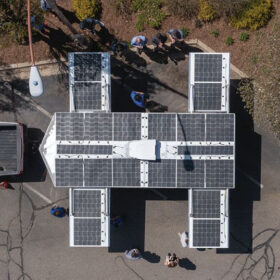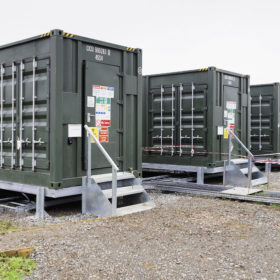Hawaii’s largest solar-plus-storage facility now operational
The 60 MW Kūihelani solar-plus-storage facility will generate enough electricity for 27,000 homes, with a 240 MWh battery energy storage system.
‘We must push back on net billing’
With California’s NEM 3.0 legislation having gutted panel sales and Arizona heading a bevy of other US states preparing to reduce solar-export payments, it’s time the United States solar industry stepped up, for ourselves as well as our customers.
Weekend Read: Decarbonizing disaster response
Diesel generators have been the workhorse of disaster relief for decades but as the frequency of extreme weather events rises, so do calls to decarbonize the emergency response. Sustainability may not be the only benefit to using solar in a crisis, as pv magazine discovers.
Hawaiian utility to balance grid with 565 MWh battery
A large grid-scale energy storage project in Hawaii, featuring Tesla Megapacks, could potentially minimize the curtailment of renewables output.
U.S. startup launches scalable wave energy converter, usable with solar
Hawaii-based Wavr LLC is developing a wave energy converter that is designed to be scaled up and integrated with other renewable energy technologies. The startup plans to sell a version integrating five 40 W solar panels at $2,300.
Analyst revises up zero-emission vehicle forecast after bumper year
A report published by BloombergNEF for the COP26 climate change summit has listed global commitments by cities, states, provinces and nations to end the sale of new fossil-fueled vehicles but, with 2035 estimated as the cut-off date for zero-emission roads by mid century, policymakers need to be more ambitious.
Tesla Powerwalls in California join the movement to create virtual power plants
Made up of distributed residential energy storage, these “plants” stabilize the grid and often end the need for new fossil generation. Tesla customers in California are the latest to join the movement.
Hawaii’s solar tender will increase state’s capacity 50%
16 project winners totaling 460 MW in capacity have been chosen by Hawaiian Electric Company to fill its most ambitious renewable procurement yet. The move will bring jobs to one of the areas hardest-hit by virus-related unemployment.
US energy storage market set to almost double this year
The solar-plus-storage combination is super-charging the deployment of batteries across the country and IHS Markit says the U.S. will become the largest market for grid-tied energy storage this year.
Washington state’s 100% renewables bill passes both Houses
Washington is looking to become the fourth state to make the move to 100% renewable electricity, with only a senate review and the hand of Governor Inslee left in the path of SB 5116.










